
Hello, all —
Under any circumstances, today’s guest blogger, award-winning romance novelist Linda Gillard, would require little introduction: the good folks who decide which of each year’s new fiction to honor with prizes have already seen to that. However, I have even less temptation to be long-winded this time around, because Linda has a genuinely astonishing story to share about her road to publication.
Even if romance isn’t your proverbial cup of tea, you’re going to want to read this, I suspect. So I’m just going to get out of the way and let her tell her story herself.
Except to say: for the benefit of those of you not already familiar with Linda’s writings — and so those of you new to writing blurbs for your own books may see how the pros pull it off — here is the publisher’s blurb for Linda’s EMOTIONAL GEOLOGY:
 Rose Leonard is on the run from her life. Taking refuge in a remote island community, she cocoons herself in work, silence and solitude in a house by the sea. But she is haunted by her past, by memories and desires she’d hoped were long dead. Rose must decide whether she has in fact chosen a new life or just a different kind of death. Life and love are offered by new friends, her lonely daughter, and most of all Calum, a fragile younger man who has his own demons to exorcise. But does Rose, with her tenuous hold on life and sanity, have the courage to say yes to life and put her past behind her?
Rose Leonard is on the run from her life. Taking refuge in a remote island community, she cocoons herself in work, silence and solitude in a house by the sea. But she is haunted by her past, by memories and desires she’d hoped were long dead. Rose must decide whether she has in fact chosen a new life or just a different kind of death. Life and love are offered by new friends, her lonely daughter, and most of all Calum, a fragile younger man who has his own demons to exorcise. But does Rose, with her tenuous hold on life and sanity, have the courage to say yes to life and put her past behind her?
Quite the grabber, eh? Here’s the blurb for her second, A LIFETIME BURNING:
 ‘I think I was damned from birth,’ Flora said, staring vacantly into space. ‘Damned by my birth.’
‘I think I was damned from birth,’ Flora said, staring vacantly into space. ‘Damned by my birth.’
Greedy for experience but determined to be good, Flora Dunbar spends a lifetime seeking love, trying to build a future out of the wreckage of her past – an eccentric childhood spent in the shadow of her musical twin, Rory; early marriage to Hugh, a clergyman twice her age; motherhood, which brings her Theo, the son she cannot love; middle-age, when she finds brief happiness in a scandalous affair with her nephew, Colin.
‘If you asked my sister-in-law why she hated me, she’d say it was because I seduced her precious firstborn, then tossed him onto the sizeable scrap-heap marked “Flora’s ex-lovers”. But she’d be lying. That isn’t why Grace hated me. Ask my brother Rory…’
That one sounds like a real barn-burner, doesn’t it? Here’s the blurb for STAR GAZING:
 Blind since birth, widowed in her twenties, now lonely in her forties, Marianne Fraser lives in Edinburgh in elegant, angry anonymity with her sister, Louisa, a successful novelist. Marianne’s passionate nature finds solace and expression in music, a love she finds she shares with Keir, a man she encounters on her doorstep one winter’s night. Keir makes no concession to her condition. He is abrupt to the point of rudeness, and yet oddly kind. But can Marianne trust her feelings for this reclusive stranger who wants to take a blind woman to his island home on Skye, to ‘show’ her the stars?
Blind since birth, widowed in her twenties, now lonely in her forties, Marianne Fraser lives in Edinburgh in elegant, angry anonymity with her sister, Louisa, a successful novelist. Marianne’s passionate nature finds solace and expression in music, a love she finds she shares with Keir, a man she encounters on her doorstep one winter’s night. Keir makes no concession to her condition. He is abrupt to the point of rudeness, and yet oddly kind. But can Marianne trust her feelings for this reclusive stranger who wants to take a blind woman to his island home on Skye, to ‘show’ her the stars?
It just goes to show you: even a short paragraph is enough room to tell a good story, as well as to show off one’s skills as a storyteller. Remember that, please, the next time you’re groaning over the task of compressing your 350-page plot into a two-minute pitch.
Oh, and before I sign off, those of you reading on this side of the pond might want to know that Linda’s books are available through the Book Depository in the UK. Why should that interest US and Canadian romance-lovers? Because the Book Depository ships worldwide for free.
I just mention.
So please make yourself comfortable in order to hear an interesting, informative, and dare I say it, inspirational story of one author’s climb from the Slough of Despair to successful publication. Take it away, Linda!





When a disturbed pupil took a swing at me in the middle of a maths lesson, I saw the punch coming. I dodged and the blow landed on my shoulder. While the rest of the class waited, open-mouthed, to see what Miss would do — retaliate with a left hook? — I sent the boy out of the room, re-assembled the remnants of my shattered dignity and finished the lesson.
What I didn’t see coming was that the blow would signal the end of my teaching career and the beginning of a long mental illness. Nor could I ever have imagined that my illness would usher in a new career as a novelist.
I was teaching in a school that served a socially deprived area and I was already struggling to maintain my mental equilibrium. The kids were challenging, but lovable, despite the fact some of the boys (those who could write) would have listed their hobbies as martial arts and drug dealing. Gallows humour kept the teaching staff going, but we taught in a climate of fear — fear of verbal and physical abuse from pupils and their parents — and fear takes its toll.
My doctor signed me off sick, suffering from stress. Stress became profound depression. I was prescribed a series of anti-depressants, none of which seemed to help. My moods fluctuated wildly, from highs that took me on shopping sprees, to lows that had me planning the perfect suicide.
Teaching had been my vocation, but I was too ill to return to my old job or look for a new one. I was 47 and, as far as I was concerned, on the scrap heap. I sat at home, alternately doped and hyper, not getting any better. For some reason — the teacher in me, I suppose — I kept a chart of my mood swings, the black days and the better days. I became convinced there was a pattern and concluded that perhaps what I was suffering from was severe pre-menstrual syndrome, so I asked to be referred to a gynaecologist.
We were no more than ten minutes into the consultation when this wonderful man pronounced the words that would change my life (and possibly saved it.) He said, “You aren’t suffering from PMS. I think you’re suffering from bipolar affective disorder.”
Manic depression.
I knew nothing about this illness that wasn’t seriously bad news. I seemed to be the first person in my family to suffer from it (it runs in families) but as I learned more about the spectrum of behaviour, old tales of temperament and eccentricity took on a new perspective. And so did I. As I stood in a bookshop, poring over a medical textbook, I was appalled to see myself described in forensic detail. What I’d thought was my mercurial personality turned out to be a life-threatening illness. My world fell apart.
But I was a teacher. I’d also been a journalist, so I made it my business to educate myself on the subject of bipolar. I read psychiatrist Kay Redfield Jamison’s memoir, AN UNQUIET MIND. She’s bipolar herself and was the first person to alert me to the idea that there could actually be some positive aspects to the disease. (On my website. you’ll find a Mental Health section and a celebration of famous manic depressives: a long list of high-achieving people, dead and alive, many of them creative artists, some of them geniuses, all known or suspected to have been bipolar.)
My condition is mild and once on the correct medication, I stabilised. With the help of a supportive psychiatrist, I began to rebuild my life. Unemployed, technically disabled, I had a lot of time on my hands, so I read a lot of books and sewed a lot of patchwork quilts.
I read all sorts of fiction but struggled to find any that reflected my life and experience. There was very little that featured women of my age. Romantic heroines over forty simply did not exist. Mature women appeared only as somebody’s mother or somebody’s wife and they never had sex, unless for comic effect. (The publishing world appears to think that, although most books are bought and read by women over 40, they actually like to read about women much younger and thinner than themselves.)
Then one day, when I was reading Louise DeSalvo’s WRITING AS A WAY OF HEALING, I came upon a paragraph that changed my life:
I didn’t know that you could write simply to take care of yourself, even if you have no desire to publish your work. I didn’t know that if you want to become a writer, eventually you’ll learn through writing — and only through writing — all you need to know about your craft. And that while learning, you’re engaging in soul-satisfying, deeply nurturing labour. I didn’t know that if you want to write and don’t, because you don’t feel worthy enough or able enough, not writing will eventually begin to erase who you are.”
That was how I felt. Erased.
I laid the book aside and — as if in a trance — walked over to my PC, sat down and started to type. I wrote about “a woman alone in a light, white room”. I could see the room and sense the atmosphere. I could see the woman and she was writing a letter, but I didn’t know who she was or who she was writing to. With no thought of publication or even of writing well, I just started typing the first page of what was to become my first novel, Emotional Geology.

I didn’t plan to become a novelist and I didn’t plan my first book. I was a sick woman. On bad days, compiling a shopping list was a challenge, so I just wrote.
To begin with, I wrote lots of short, self-contained pieces that could be read in any order. If they told a story, it would be cumulatively, as a sort of collage. As I wrote, I noticed two things. The pain stopped. All kinds of pain. Writing, it seemed, was morphia for the soul. (And, incidentally, just as addictive.) I also noticed that time passed. I looked up and it was lunchtime. I looked up again and it was midnight. Hooray! I was exhausted and could sleep.
The word count grew, but still I avoided planning. Ducking the issue, I wondered if I could I write a “book-in-a-box,” a non-linear novel that didn’t need to be bound because the pages could be read in any order. (As a teacher I’d been a big fan of those Choose Your Own Adventure books.)
That idea worked for a while, but in the end I realised it did matter — from a dramatic point of view — what order you read the pages in. A final running order had to be established so I had fun carpeting the floor with printed sheets of A4, “designing” my book in much the same way I arranged blocks when assembling my quilts.

Emotional Geology wasn’t autobiography, nor was it fictionalised memoir. I managed to avoid some first novel pitfalls by wanting so very badly to escape. It was bad enough living my life; I certainly didn’t want to write about it. But I did want to tackle the issues.
I didn’t know it then, but what I was did was reject veracity in favour of emotional authenticity. Later, I realised this is an essential digestive process if the raw material of our lives is to be transformed into palatable fiction. Student writers often think a faithful, unflinching account of real-life events and feelings is enough to make something readable, possibly publishable. This is not the case.
As writers we have to accept the difference between something being true and something being convincing. Paradoxically, fiction can tell truer truths. If a reader is to believe (or suspend her disbelief), truth must be edited for fictional purposes and presented in the best form to do the job. This is what good fiction is: true lies.
If you find this idea difficult, think about raising money for charity and the photographs or news footage you might use in your campaign. You wouldn’t use material so upsetting that people would turn the page of the magazine or switch channels. You want to disturb, not repel, so unvarnished truth might not serve your purpose.
This isn’t a cop-out, it’s careful mediation. If we record “undigested” truth in our therapeutic writing, its therapeutic value exists for the author, not the reader. (To be sure, all writing is therapeutic to an extent and probably all writers begin writing therapeutically, but we need to move on from there if we’re to develop our skills, especially if we seek publication.)
When I wrote my first novel, what I wrote — instinctively and therapeutically — was an alternative autobiography, what my life might have been like under very different circumstances. I was married; my heroine was single. I quilted as a hobby; she was a professional textile artist. I lived in a Norwich suburb; she lived on the bleak and remote, Gaelic-speaking Hebridean island of North Uist, which I knew from family holidays on the west coast of Scotland.
I set out to write a thinking-woman’s love story that tackled real issues. I wanted to put a sensitive, creative woman in the spotlight and ignore her age, just look at her heart and mind. I was able to write with passion and paint-stripper honesty because I knew my novel would never be published. (My mentally ill romantic heroine was 47, and so was I. A less commercial proposition would be hard to imagine.) Hooked on writing, in love with both my heroes, I was fascinated to the point of obsession by the technical challenges of my story.
Was it possible to make a bipolar heroine sympathetic?
How could I convey her bouts of “madness”?
Could I depict the dreadful toll manic depression took on carers?
Was it possible to explore the undisputed links between creativity and bipolar without glamorising a potentially lethal illness?
Could I make depression interesting?
Could I, in short, come up with some good news about living, loving and working with bipolar?
I hadn’t the faintest idea, but I needed to do these things if I was to make sense of my own life, so I set about my self-imposed tasks with a will. I was writing for my life. Gradually writing became my life.
Structure was a problem from the start. Emotional Geology is a book in which nothing much happens, but all sorts of tumultuous events have occurred in the past. What the characters are dealing with in the present is fall-out. My heroine, Rose, lives alone but is haunted by her past. At times she’s barely able to distinguish the new man in her life from the one who got away. And that was the point. There is no escape. (My teacher-hero quotes Milton to her: “The mind is its own place, and in itself/Can make a Heav’n of Hell, a Hell of Heav’n.”)
I tried to construct a book that was confused, but not confusing. (My working title was SCRAPBOOK.) I came up with a kaleidoscopic structure, moving backwards and forwards in time, sometimes writing in first person, sometimes third. As I wrote, I delved into the layers of Rose’s memory, all of which existed simultaneously, like an archaeological dig. Landscape and particularly geology became the book’s dominant metaphors and so I arrived at my final title: Emotional Geology.

I wanted to take the reader inside my heroine’s troubled mind, so I opted to write in the present tense throughout, to create an “as it happens” feel for all events, past and present, since for Rose, the past was just as vivid as the present. (I discovered the present tense also stops you over-writing. It’s very exposing, like those bright, unforgiving lights in changing rooms. Verbal flab is spotlit.)
But how was I to convey Rose’s manic states? The problem with conveying mania from the inside (i.e. from Rose’s point of view) was that I had to portray a state of mind unfamiliar and alarming to most people. Was there a way to draw a reluctant reader in?
I’d noticed that at moments of drama or emotional stress my prose was straining toward a different, heightened style. Eventually I acknowledged — with considerable surprise — that what I was repressing was an urge to write poetry. (If I’d had any aspiration to publication, the introduction of poems as part of the narrative surely sounded the death knell for my literary hopes.)
The poems seemed to write themselves, even though I’d never written one before. This might have been because I wasn’t trying to write good poetry. (It’s wonderfully liberating when you stop trying to be “a good writer.” I recommend it. Aspiration can be artistically crippling. I never ask myself now if what I’ve written is any good, the question is rather, “Have I said what I wanted to say in the way I wanted to say it?” If I have, then for me it’s good writing. How could it be better?)
Emotional Geology depicted an internal, dislocated world of shifting time and place. The present tense and the poems allowed the book to float in various limbos and the layout of the poems on the page drew useful boundaries: Rose occasionally went off the deep end. When she did, she broke out in poems.
Well, it all made perfect sense to me. That white room was both Rose’s island home and her “cell” in the mental hospital. It was also the deeply medicated blank space of her mind. There was a process going on and, in Zen-like fashion, I just needed to get out of its way.
Even now, working on my fifth novel, I find I don’t always understand what I’ve written, or rather why I’ve written it. I don’t actually think it’s necessary to understand. I do think you need to be able to trust what you’ve written, which means trusting in yourself as a writer. That’s hard.
It’s also hard to trust intelligent readers to complete the process; to bring, as co-creators, their own experience and understanding to your text. It wasn’t until I started getting feedback from readers that I realised a book isn’t just the words we write, it also exists in the spaces in between the words. As authors we have no control over those spaces, but we can (and should) create them. They are where our fiction really lives.
I wrote my first novel just as a treat for myself, but I had a change of heart and decided to try and publish it after I read the results of a Depression Alliance survey in the UK which said 26% of those questioned did not believe mental illness was a genuine illness.
That’s one in four. Clearly, there was work to be done.
Encouraged by my writers’ e-group, I sent my weird but now completed typescript to agents. To my astonishment, one took me on. (I think she fell in love with my hero. Or maybe it was the Hebrides.) Then we struck lucky. A new imprint, Transita, was looking for books written by, for and about mature women. (This is no longer the case, so please don’t send them unsolicited manuscripts.)
Transita bought Emotional Geology and published a wide variety of novels which were a hit with readers of all ages, but were dismissed by the UK media as “HRT Lit” (Anne here: that’s Brit-speak for hormone replacement therapy, i.e., menopause treatments), “Hag Lit” and “Romance for Wrinklies.”
Aged 53, with my first novel published, I concluded that my biggest “disability” as an author was not that I suffered from bipolar affective disorder, but that I was middle-aged, female and had had the temerity to write about a sexually active middle-aged female. (The ageism and misogyny of British culture beggars belief. But hey, they used to burn us as witches! Things are definitely looking up.)
Emotional Geology fared better than some of Transita’s lighter books, perhaps because it defies categorisation. It comforts and confronts. It has appealed to people who have no knowledge of, or particular interest in mental illness and was short-listed for the Waverton Good Read Award, given to the year’s best first British novel. Well received by the mental health press, Emotional Geology was also runner-up in Pure Passion a light-hearted library promotion of romantic reads.

At author events readers complain to me in a good-natured way that they’ve been up till 2.00 am, unable to put the book down. But very little actually happens, so how can it be un-put-downable?
My theory is, since I write my books not knowing what happens next, nor even the final outcome, suspense and “hooks” for the reader are built in. Nobody wants to know what happens more than I do, so I’m writing as fast as I can, to find out. And that’s how readers like to read.
For this reason I’m anti-synopses. Publishers need them, but many writers don’t. Your subconscious — if you let it — will write a better and braver book than your conscious mind. After that, it’s all in the editing.
Planning a novel and writing a synopsis might encourage you to opt for the obvious in character and plot. You won’t arrive at your artistic decisions in an organic way. (E.M. Forster is supposed to have said, “How do I know what I think until I see what I say?”) Would I have dared plan poems for Emotional Geology? The idea wouldn’t have occurred to me and, if it had, I would have dismissed it as pretentious. It was only in the writing of the book that poems presented themselves as the solution to a technical problem.
Faced unexpectedly with publication and the inevitable PR, I had to decide whether to be “out” about my own mental health history. Was I going to set myself up to be dismissed as a one-book wonder or an author of fictionalised memoir? (I didn’t realise then grounds for dismissal could just be middle age.)
I’d complicated matters by moving to Skye, another Scottish island, which made my novel look far more autobiographical than it was. (Be careful what you wish for… Writing my alternative life gave me the courage to go and live it.) A double bereavement and both our children leaving home had led to some domestic stock-taking. My husband and I decided to live our dream and move to a big house on a hillside, facing the spectacular Cuillin mountain range on the Isle of Skye.

So I did what I thought was the only honest thing. I’d written a book in which manic depression was just one aspect of my heroine and secondary to her creativity. That’s how it had to be for me too. So from the start I was “out” about my mental health history. Readers have come forward, in emails and in person, to thank me for the book and for standing up in public to demonstrate that there’s life after breakdown, after diagnosis; that it is never, ever too late to reinvent yourself.
I no longer live on Skye but I live a quiet, creative and productive life. I write, teach workshops and speak to groups about writing and mental health. My third novel, Star Gazing, set on Skye, was short-listed earlier this year for the Romantic Novel of the Year Award, organised by the Romantic Novelists’ Association.

This time, I created a romantic heroine whom most readers would regard as disabled. Marianne is middle-aged, widowed and congenitally blind. Much of Star Gazing is written in the first person, from Marianne’s blind point of view and this raised a number of technical problems. I learned a lot as I solved them — and not just about writing. I began the book thinking of blindness as a disability, but by the time I was halfway through, I was convinced the blind have other ways of “seeing”. (Or as the sighted hero, Keir says to Marianne, “You have perfectly good eyes, they’re just not in your sockets.”)
As writers we agonise about originality and commercial appeal. The more anxious among us fret about copyrighting our ideas. But Christopher Booker says there are only seven basic plots. (Did you know LORD OF THE RINGS incorporates all of them?)
But what is unique to each of us is our way of seeing the world. That is the commodity writers have to sell, the “story” we have to tell. When we discover our true voice, it’s as unique as our fingerprint. But it might take a long time — and a lot of writing — to find.
In the meantime, aim to say what you want to say, in the way you want to say it. That’s good writing.
How could it be better?





 Linda Gillard studied Drama and German at Bristol University, then trained as an actress at the Bristol Old Vic Theatre School. Whilst under-employed at London’s National Theatre, Linda developed a sideline as a freelance journalist. She ran two careers concurrently for a while, then gave up acting to raise a family and write from home.
Linda Gillard studied Drama and German at Bristol University, then trained as an actress at the Bristol Old Vic Theatre School. Whilst under-employed at London’s National Theatre, Linda developed a sideline as a freelance journalist. She ran two careers concurrently for a while, then gave up acting to raise a family and write from home.
Twelve years later, she re-trained as a teacher and taught in Norfolk for some years. She moved to the Isle of Skye where she lived for six years in a house on a hill overlooking the Cuillin mountain range, featured in her first novel, EMOTIONAL GEOLOGY (short-listed for the 2006 Waverton Good Read Award.) Linda now lives near Glasgow.
Her second novel, A LIFETIME BURNING was published by Transita in 2006 and STAR GAZING, set partly on Skye, was published by Piatkus in 2008.

 It would be easy to dismiss the incident as the kind of thing that doesn’t happen anymore, but SLAUGHTERHOUSE-FIVE has been one of the most consistently banned books in the world ever since. Reading it was forbidden in Levittown, New York in 1975, North Jackson, Ohio in 1979, and Lakeland, Florida in 1982. The Washington Park High School of Racine, Wisconsin was barred from buying it in 1984; by 1986, only students who had written parental permission could take it out of four Racine high school libraries.
It would be easy to dismiss the incident as the kind of thing that doesn’t happen anymore, but SLAUGHTERHOUSE-FIVE has been one of the most consistently banned books in the world ever since. Reading it was forbidden in Levittown, New York in 1975, North Jackson, Ohio in 1979, and Lakeland, Florida in 1982. The Washington Park High School of Racine, Wisconsin was barred from buying it in 1984; by 1986, only students who had written parental permission could take it out of four Racine high school libraries. In 1987, its residence on the shelves of LaRue County High School in Kentucky was challenged, and it was banned outright in all the schools in Fitzgerald, Georgia. The following year, the school board in Baton Rouge, Louisiana was urged to remove the book from all public libraries on the grounds that it was vulgar and offensive; the year after that, parents tried to have it removed from a high school course on the modern novel because of offensive language and the portrayal of women in the book. (A book which, incidentally, contains only two substantial female characters — not that any of Vonnegut’s female characters are ever especially substantial — an ex-adult movie star kidnapped by aliens and the protagonist’s unattractive wife.)
In 1987, its residence on the shelves of LaRue County High School in Kentucky was challenged, and it was banned outright in all the schools in Fitzgerald, Georgia. The following year, the school board in Baton Rouge, Louisiana was urged to remove the book from all public libraries on the grounds that it was vulgar and offensive; the year after that, parents tried to have it removed from a high school course on the modern novel because of offensive language and the portrayal of women in the book. (A book which, incidentally, contains only two substantial female characters — not that any of Vonnegut’s female characters are ever especially substantial — an ex-adult movie star kidnapped by aliens and the protagonist’s unattractive wife.) Seem like ancient history? Okay, try these on for size: in 1996, parents at the Round Rock Independent High School in Texas unsuccessfully tried to get the book removed on the grounds that it was too violent. In 1998, its presence as a summer reading option for incoming eleventh graders in Prince William County, Virginia raised quite a furor. In 2001, the book was removed from a tenth grade required reading list in Coventry, Rhode Island because a parent complained that it contained vulgar language, violent injury, and sexual content.
Seem like ancient history? Okay, try these on for size: in 1996, parents at the Round Rock Independent High School in Texas unsuccessfully tried to get the book removed on the grounds that it was too violent. In 1998, its presence as a summer reading option for incoming eleventh graders in Prince William County, Virginia raised quite a furor. In 2001, the book was removed from a tenth grade required reading list in Coventry, Rhode Island because a parent complained that it contained vulgar language, violent injury, and sexual content. Still too long ago to make you a tad nervous? In 2007, a newly-elected school board member challenged SLAUGHTERHOUSE-FIVE and eight other books on the Arlington Heights, Illinois Northwest Suburban High School District 214′s reading list. Her objection arose, she said, not from having read any of the books herself, but from excerpts she’d read on the web. In the same year — that’s a scant two years ago, people — it was also under threat of ban in a high school in Howell, Michigan. That conflict escalated to the point that the following year, the county prosecutor actually had to rule on whether distributing the book was a criminal act.
Still too long ago to make you a tad nervous? In 2007, a newly-elected school board member challenged SLAUGHTERHOUSE-FIVE and eight other books on the Arlington Heights, Illinois Northwest Suburban High School District 214′s reading list. Her objection arose, she said, not from having read any of the books herself, but from excerpts she’d read on the web. In the same year — that’s a scant two years ago, people — it was also under threat of ban in a high school in Howell, Michigan. That conflict escalated to the point that the following year, the county prosecutor actually had to rule on whether distributing the book was a criminal act. Why all the hoopla over whether high schoolers have free access to a book that, frankly, is far less sexually explicit than quite a bit of the YA currently on the market?
Why all the hoopla over whether high schoolers have free access to a book that, frankly, is far less sexually explicit than quite a bit of the YA currently on the market?

 Sophia Gorgens was born in Washington D.C to German diplomats Lutz and Ulrike Gorgens. Along with her family, including two brothers and an older sister, she moved to Bonn, Germany; Boston, Massachusetts; Ankara, Turkey; and Atlanta, Georgia, where she currently resides. Sophia has acquired a love for traveling and has visited over twenty countries and most of the United States. She is currently attending Woodward Academy high school as a rising junior. She enjoys reading, writing, skiing, participating in marching band, and spending time with her Bernese Mountain dog and cat. She has started bee-keeping and quilts in her remaining free time. She is currently working on two novels, Dagger: A Horse’s Tale and Rebel Angels.
Sophia Gorgens was born in Washington D.C to German diplomats Lutz and Ulrike Gorgens. Along with her family, including two brothers and an older sister, she moved to Bonn, Germany; Boston, Massachusetts; Ankara, Turkey; and Atlanta, Georgia, where she currently resides. Sophia has acquired a love for traveling and has visited over twenty countries and most of the United States. She is currently attending Woodward Academy high school as a rising junior. She enjoys reading, writing, skiing, participating in marching band, and spending time with her Bernese Mountain dog and cat. She has started bee-keeping and quilts in her remaining free time. She is currently working on two novels, Dagger: A Horse’s Tale and Rebel Angels.

 Following a twenty-two-year US Navy career,
Following a twenty-two-year US Navy career, 

 Auburn McCanta is a Pacific Northwest girl gone south. After growing up literally surrounded by her mother’s prized Portland roses, McCanta now lives in Phoenix with her husband, one Golden Retriever and one impossible Labradoodle. She’s become accustomed to the Sonoran Desert with its occasional neighborhood coyote and scorpion rout.
Auburn McCanta is a Pacific Northwest girl gone south. After growing up literally surrounded by her mother’s prized Portland roses, McCanta now lives in Phoenix with her husband, one Golden Retriever and one impossible Labradoodle. She’s become accustomed to the Sonoran Desert with its occasional neighborhood coyote and scorpion rout.

 According to family lore, F. Gerard Jefferson’s claim of “always wanting to be a writer” dates back to kindergarten when, after the first day, he came home upset because he still couldn’t read. He would follow a more traditional arc after this — writing for enjoyment in spiral notebooks, becoming yearbook editor his senior year in high school, fleeing the craft because of the sobering fiscal realities of becoming an artist — but the “I still can’t read!” episode is, by far, the most telling expression for the ambition that defines F. Gerard Jefferson’s life and, hopefully, his writing.
According to family lore, F. Gerard Jefferson’s claim of “always wanting to be a writer” dates back to kindergarten when, after the first day, he came home upset because he still couldn’t read. He would follow a more traditional arc after this — writing for enjoyment in spiral notebooks, becoming yearbook editor his senior year in high school, fleeing the craft because of the sobering fiscal realities of becoming an artist — but the “I still can’t read!” episode is, by far, the most telling expression for the ambition that defines F. Gerard Jefferson’s life and, hopefully, his writing. 
 Rose Leonard is on the run from her life. Taking refuge in a remote island community, she cocoons herself in work, silence and solitude in a house by the sea. But she is haunted by her past, by memories and desires she’d hoped were long dead. Rose must decide whether she has in fact chosen a new life or just a different kind of death. Life and love are offered by new friends, her lonely daughter, and most of all Calum, a fragile younger man who has his own demons to exorcise. But does Rose, with her tenuous hold on life and sanity, have the courage to say yes to life and put her past behind her?
Rose Leonard is on the run from her life. Taking refuge in a remote island community, she cocoons herself in work, silence and solitude in a house by the sea. But she is haunted by her past, by memories and desires she’d hoped were long dead. Rose must decide whether she has in fact chosen a new life or just a different kind of death. Life and love are offered by new friends, her lonely daughter, and most of all Calum, a fragile younger man who has his own demons to exorcise. But does Rose, with her tenuous hold on life and sanity, have the courage to say yes to life and put her past behind her? ‘I think I was damned from birth,’ Flora said, staring vacantly into space. ‘Damned by my birth.’
‘I think I was damned from birth,’ Flora said, staring vacantly into space. ‘Damned by my birth.’ Blind since birth, widowed in her twenties, now lonely in her forties, Marianne Fraser lives in Edinburgh in elegant, angry anonymity with her sister, Louisa, a successful novelist. Marianne’s passionate nature finds solace and expression in music, a love she finds she shares with Keir, a man she encounters on her doorstep one winter’s night. Keir makes no concession to her condition. He is abrupt to the point of rudeness, and yet oddly kind. But can Marianne trust her feelings for this reclusive stranger who wants to take a blind woman to his island home on Skye, to ‘show’ her the stars?
Blind since birth, widowed in her twenties, now lonely in her forties, Marianne Fraser lives in Edinburgh in elegant, angry anonymity with her sister, Louisa, a successful novelist. Marianne’s passionate nature finds solace and expression in music, a love she finds she shares with Keir, a man she encounters on her doorstep one winter’s night. Keir makes no concession to her condition. He is abrupt to the point of rudeness, and yet oddly kind. But can Marianne trust her feelings for this reclusive stranger who wants to take a blind woman to his island home on Skye, to ‘show’ her the stars?




 Linda Gillard studied Drama and German at Bristol University, then trained as an actress at the Bristol Old Vic Theatre School. Whilst under-employed at London’s National Theatre, Linda developed a sideline as a freelance journalist. She ran two careers concurrently for a while, then gave up acting to raise a family and write from home.
Linda Gillard studied Drama and German at Bristol University, then trained as an actress at the Bristol Old Vic Theatre School. Whilst under-employed at London’s National Theatre, Linda developed a sideline as a freelance journalist. She ran two careers concurrently for a while, then gave up acting to raise a family and write from home.







 Explore the dark, rainy underbelly of one of America’s most beautiful but enigmatic cities through brand-new stories by Gigi Little, Justin Hocking, Chris A. Bolton, Jess Walter, Monica Drake, Jamie S. Rich (illustrated by Joelle Jones), Dan DeWeese, Zoe Trope, Luciana Lopez, Karen Karbo, Bill Cameron, Ariel Gore, Floyd Skloot, Megan Kruse, Kimberly Warner-Cohen, and Jonathan Selwood.
Explore the dark, rainy underbelly of one of America’s most beautiful but enigmatic cities through brand-new stories by Gigi Little, Justin Hocking, Chris A. Bolton, Jess Walter, Monica Drake, Jamie S. Rich (illustrated by Joelle Jones), Dan DeWeese, Zoe Trope, Luciana Lopez, Karen Karbo, Bill Cameron, Ariel Gore, Floyd Skloot, Megan Kruse, Kimberly Warner-Cohen, and Jonathan Selwood.


 Paula Neves has been writing across genres since she was a teen, but has always loved poetry, to which she keeps returning. Her poetry has appeared in
Paula Neves has been writing across genres since she was a teen, but has always loved poetry, to which she keeps returning. Her poetry has appeared in 




 Some of you may be familiar with Sheriff Joe Arpaio, the star of the reality TV show,
Some of you may be familiar with Sheriff Joe Arpaio, the star of the reality TV show, 

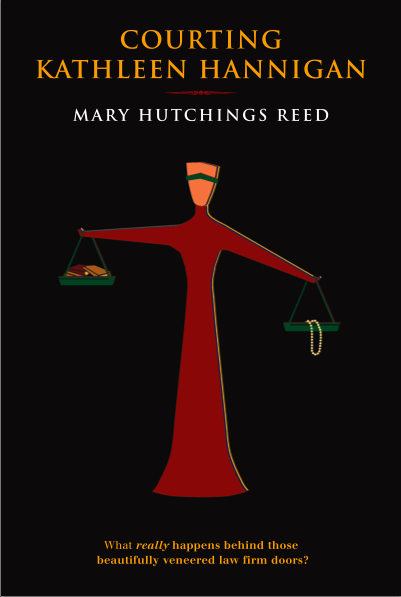
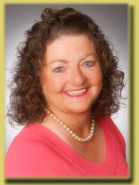

 Ever since turning 40 a few years ago,
Ever since turning 40 a few years ago, 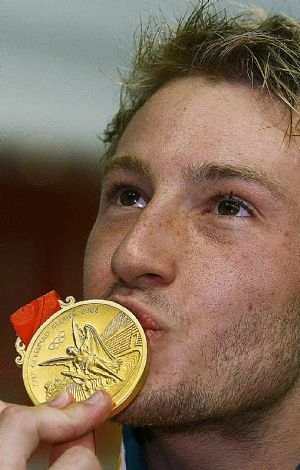

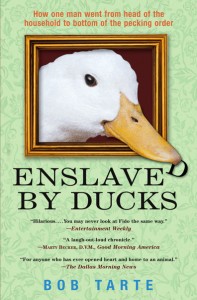 Enslaved By Ducks
Enslaved By Ducks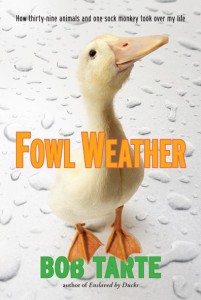 Fowl Weather
Fowl Weather


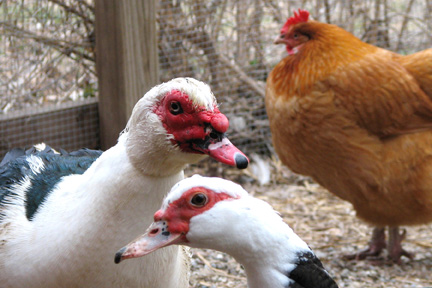
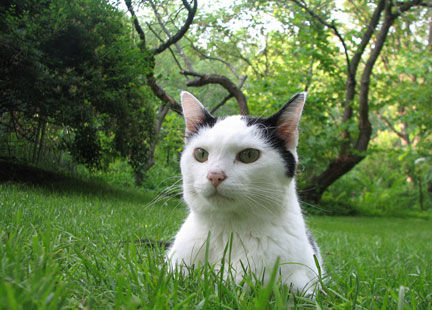
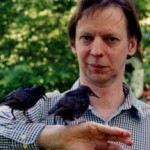
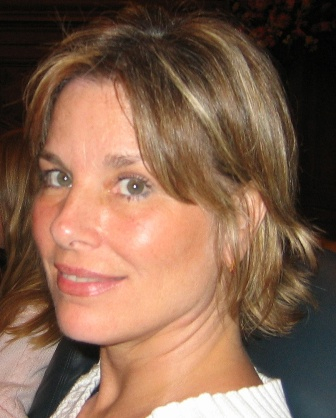

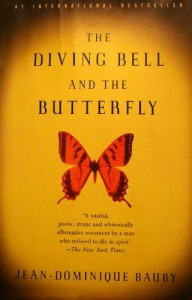 After his massive stroke caused a type of paralysis known as
After his massive stroke caused a type of paralysis known as 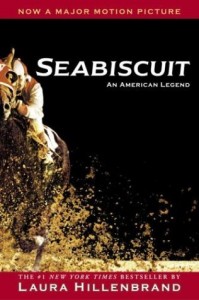
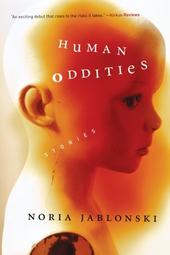 Jablonski’s collection of short stories,
Jablonski’s collection of short stories, 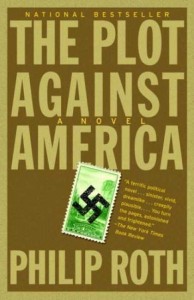 In
In 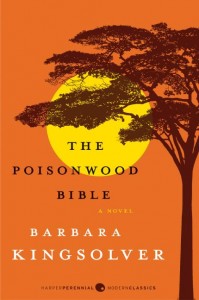 In
In 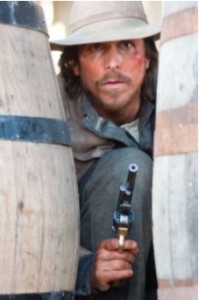 In
In  And then there’s
And then there’s  Consider the movie
Consider the movie